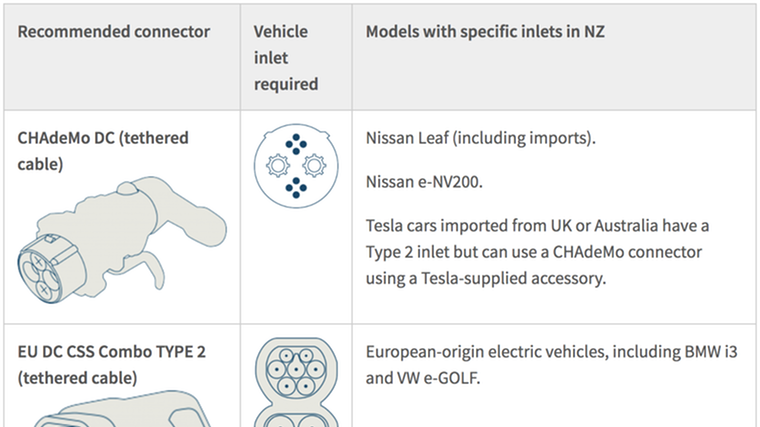Which format will prevail?
Posted on 25 January, 2018

Most plugs used to charge cars at home use the slow alternate current (AC). Therefore, building a network that can charge vehicles quickly when on the road is key, given many potential consumers still worry about battery range.
The fastest DC stations, capable of delivering up to 400 kilowatts, can recharge cars within 10 minutes, a vast improvement on the 10-12 hours it can take to reload at some AC charging points today.
There are currently four major standards for electric vehicle (EV) chargers that will supercharge batteries:
- Tesla’s Supercharger system.
- CCS, favoured by Europe, BMW, Mercedes-Benz maker Daimler, Ford and the Volkswagen group, which includes Audi and Porsche.
- CHAdeMo or Charge de Move, developed by Japanese firms, including Nissan and Mitsubishi.
- GB/T in China, the world’s biggest EV market.
“I think over time CHAdeMO and CCS will converge, likely into the current CCS standard, and the jury is out as to what will happen to Tesla,” said Pasquale Romano, chief executive officer of Silicon Valley-based ChargePoint, which runs one of the world’s largest charging station networks.
So far, there are about 7,000 CCS charging points worldwide, according to CharIN, with more than half in Europe.
The European Union backs CCS as the standard for fast-charging but does not prohibit other plugs being installed.
In New Zealand, the New Zealand Transport Agency (NZTA) recommends both the CHAdeMo DC and CCS connector types in order achieve compatibility across public charging stations.
Globally, there are 16,639 charge points compatible with CHAdeMO - mostly in Japan and Europe - and 8,496 Tesla Superchargers, with the majority in the United States.
In China, there are 127,434 GB/T charging stations, according to the China Electric Vehicle Charging Infrastructure Promotion Alliance.
Tesla’s system is exclusive to its clients, for example, while CCS features a double-plug that can charge DC and AC, increasing the number of spots where drivers can recharge.
CHAdeMO allows cars to sell power from their batteries back to the grid, a process known as bi-directional charging that can help stabilise energy networks in times of demand swings and earn car owners some extra cash.
CCS fast-chargers has also teamed up with companies that have service station networks in Europe: Shell, OMV, Germany’s Tank & Rast and retailer Circle K.
For now, CCS, Supercharger and CHAdeMO plugs continue to be installed in Europe as well as the United States, while China is pressing ahead with GB/T, suggesting it is too early to call a winner in the plug wars - especially as no carmaker will want to lose out on the Chinese market.






